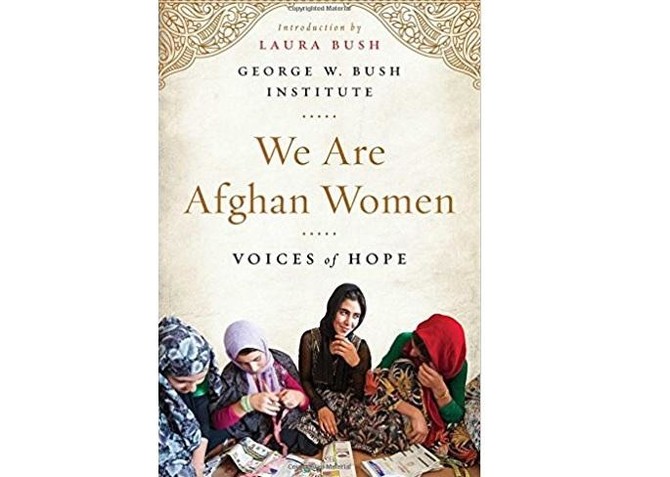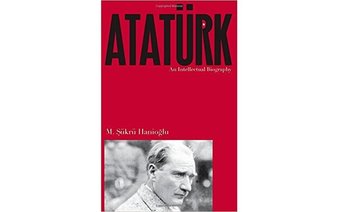The Taliban insurgency has entered its 16th year in Afghanistan, but their chances of controlling the country remain weak due to the lack of a broad national support for their cause. Staunch sympathizers comprise less than 10 percent of the Afghan population and 93 percent see the Taliban as the biggest threat to their safety and lives, according to the book “We Are Afghan Women: Voices of Hope.” In recent years, ordinary Afghans have taken up arms and driven them out of their localities in different part of the country.
Since 2001, the country’s legal framework has improved to better protect women against violence and harassment. Millions of Afghan girls go to school, women have access to health care services and even have some level of political representation. These stories form an inspiring book, published by the George W. Bush Institute, which showcases the lives of women from different age groups and professions.
All have become leaders in their communities or their professions. Each woman is her own success story and each has her own remarkable tale to tell, explains Laura Bush in the introduction. All the women are committed to their homeland and they express themselves with sincerity. I laughed and cried more than once and, most of all, I marveled at their extraordinary courage and their staunch resolve.
The first story is one of the most beautiful in this book. Zainularab Miri tells us how she and six other women agreed to help girls who were not allowed to go to school. Families of these girls would provide rooms and even sleeping spaces inside their homes. They would teach for one day, or sometimes for a few days, in these hidden rooms. “Each person in those rooms, each person in those houses was risking their lives. If the Taliban found out, we would have surely faced death,” Miri said in the book. She also tells of how she dreamt of being a bee keeper, a traditionally male job in the country. “But that only made me more passionate to learn the business… I started by buying two hives. Once I had my two hives, I wanted to expand. I was paid as much money for my nectar and honey as the male beekeepers were,” Miri said.
For Miri, women living under the Taliban were like queen bees — trapped in a hive with no escape. The bees build their honeycomb in the darkness just as women survived by working in darkness, behind curtains or under the cover of cloth.
“Each season, watching my bees leave and fly off and then return laden with sweet nectar for honey fired in me a passion to be able to move about freely. But not just for me, for as many women as I could find. I believe that in order to change a country, first you must work on the women,” Miri said.
Today, Miri is the head of the Ghazni Province Foundation of Women Beekeepers. She is also the secretary for the Afghan Beekeepers Society, making her a member of the beekeepers’ council of elders.
Mindsets are changing and a better future is possible because Afghan women know they deserve better and are willing to fight for a brighter future. Belquis Gavagan showed her courage and patriotic feelings at an early age. She turned seven-years-old the day the Russians entered Kabul. She soon discovered that she could no longer climb to her favorite spot at the top of a hill to enjoy one of the best views of Kabul. The Russians took over the hill and established a military base. The next day, on her way to school, Belquis took a rock and threw it at a tank. A soldier leaped out of the tank and chased her but she escaped and managed to hide in a shop.
Gavagan highlights the importance of education and economic empowerment. Up to 87 percent of Afghan women have been subjected to some form of abuse. However, after vocational training, women are respected more because they earn an income, according to the book.
She also makes two pertinent remarks. First, she believes that you cannot separate men from women and talk about improving the plight of women. A long-lasting change to women’s lives in Afghanistan can only take place if the men are involved too.
Second, Gavagan questions the necessity of providing Afghans with college scholarships in different countries, especially in the US, because they do not always have the desired effect.
“So, everyone has to think in advance about what are the potential consequences. If you want to educate people from Kandahar and Helmand, yes, do that. I’m all for it. But send them to Kabul first. Then have them go to India or Malaysia, rather than bringing someone from those places directly to the US. I have worked with mullahs who have gone to Italy and European countries and they came back to Afghanistan more conservative than they were before,” Gavagan said.
Mina Sherzoy, the daughter of a diplomat, founded several non-profit organizations since she returned to Afghanistan in 2002. One of the most successful programs is the Artemis Project, PEACE THROUGH BUSINESS, which was established by the Thunderbird School of Global Management in Arizona, US.
Mina shared the amazing success story of an illiterate woman who learned how to read, write, tailor and sew in six months. She also learned the basics of business and finance. She started sewing and bought a sewing machine through microfinance. Soon after that, she started another business. She purchased a tandoor, a round oven on which you bake flatbread. She put it in her house and told the ladies in her neighborhood not to buy from the bakery for she would charge them less.
“The most important thing, for men and for women, is economic empowerment. My passion from day one has been economic empowerment. When people are economically empowered, they can live a normal life. For example, they can pay for a doctor… They can send their children to the best schools,” Sherzoy said.
Sherzoy recognizes that the international community, thanks to their funding and assistance, has played a major role in Afghanistan. “There is no doubt in my mind that women wouldn’t be where they are today if it weren’t for the international community. But there are flaws in what’s been done and those flaws need to be fixed. If you really want your investment to pay off, you want to make sure that person is going to benefit. You don’t just bring in 30 people to a seminar, take a picture and write a report.”
It is impossible to recount all the stories included in the book, but a program called “Turquoise Mountain” deserves special mention. It was established in 2006, with the support of Prince Charles and a generous grant from USAID, to help save Afghanistan’s centuries-old culture of art. This organization is working to train a new generation of artists in calligraphy and miniature painting, woodwork, jewelry-making and ceramics as well as architecture.
The uneven pace of change in areas affected by violence and conflict is a serious threat and a cause for alarm. However, all the women in the book are fighting for economic empowerment and more dignified lives amid the ongoing strife.


Book Review: The powerful stories of Afghan women
Book Review: The powerful stories of Afghan women

What We Are Reading Today: ‘Planetary Climates’

- As this book makes clear, the better we can understand how various planetary climates formed and evolved, the better we can understand Earth’s climate history and future
Author: ANDREW INGERSOLL
This concise, sophisticated introduction to planetary climates explains the global physical and chemical processes that determine climate on any planet or major planetary satellite—from Mercury to Neptune and even large moons such as Saturn’s Titan.
Although the climates of other worlds are extremely diverse, the chemical and physical processes that shape their dynamics are the same.
As this book makes clear, the better we can understand how various planetary climates formed and evolved, the better we can understand Earth’s climate history and future.
© 2025 SAUDI RESEARCH & PUBLISHING COMPANY, All Rights Reserved And subject to Terms of Use Agreement.














